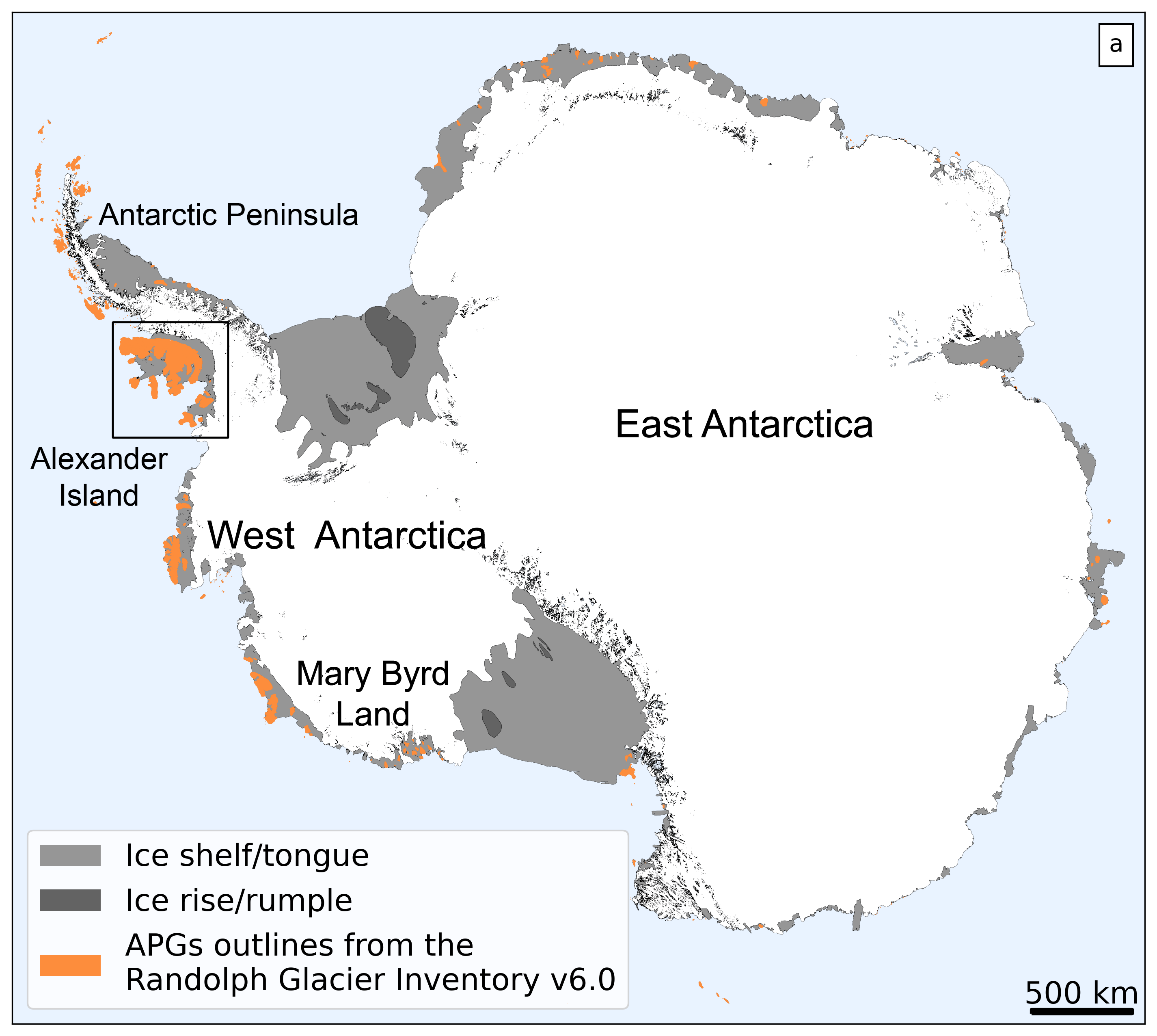Projects
Future sea-level rise and freshwater export from Antarctic Peripheral Glaciers and Ice Caps (APGs) in a warming climate

This project is funded by UKRI and NERC as part of the NERC Independent Research Fellowship program . In this project I'm investigating how much Antarctic glaciers and ice caps located around antarctic islands will contribute to future sea-level rise. The aim of my fellowship is to assess the ice volume within these glaciers and ice caps and estimate its potential changes using a combination of advanced ice dynamical models, machine learning techniques, and the latest remote sensing data. This stems from the lack of consensus among large-scale glacier models regarding the volume of ice stored in APGs, which affects projections of sea-level rise and has significant implications for both oceanographic and ecological systems. More information here.
PhD Opportunity through the Edinburgh E5 DTP: Glacier and Landscape Evolution of Antarctic Islands in a Warming Climate. Application deadline 06/Jan/2025
The Big Thaw: gauging the past, present and future of our mountain water resources

The Big Thaw is a UKRI/NERC-funded Highlight Topics project focused on understanding the evolution of regional mountain water resources by studying glacier retreat in the European Alps and Himalayas. Glaciers are crucial to global water resources, as they store about 2.1% of all Earth's water and are the largest reservoir of freshwater, holding roughly three-quarters of the planet's freshwater supply. The project addresses four key observation gaps; snowfall, glacier thickness, extreme weather, and mountain water runoff. By calibrating and refining model processes with such measurements, the project aims to reduce biases and uncertainties in model outputs. I was appointed post-doc for the project and now as collaborator, I aim to contribute by implementing the Factorial Snow Model into the Open Global Glacier Model. More information on The Big Thaw here.
Post-doc opportunity: applications now closed.
QUORUM: QUantifying and Reducing Uncertainty in Multi-Decadal Projection of Ice Sheet-Sea Level Contribution

QUoRUM is an NERC Standard Grant, led by PI Dan Goldberg at The University of Edinburgh. This project was devoted to characterized initialization uncertainty in ice-sheet model projections. This is the uncertainty in unknown model parameters after we calibrate such parameters with observations – e.g., errors in the basal drag coefficient in the sliding law, after we infer this parameter from satellite-ice velocity observations (plots a, b). The project utilizes advanced computational tools for solving partial differential equations (PDEs) and automatic differentiation, combined with methodologies to propagate these uncertainties from observations to sea level rise projections. More information on this EGU science blog or check out our paper.
GloSAT: estimating how the global climate has changed over the industrial era

The GloSAT project, short for Global Surface Air Temperature, is funded by NERC. It aims to develop and analyze an extended, consistent global surface temperature climate record dating back to the 1780s, based on air temperature observations collected across land, ocean, and ice. This groundbreaking climate record is currently under review in the Earth System Science Data journal . As part of the Surface Processes group at the National Oceanography Centre, I contributed to the processing and analysis of marine meteorological observations done on ships, which went into this data record.
Software & Data
In construction...